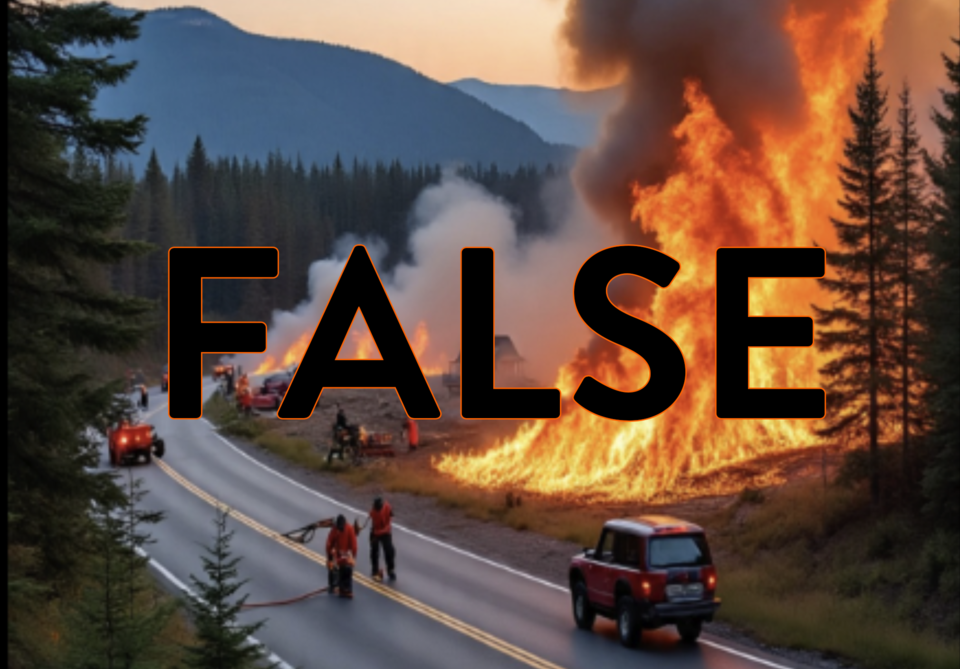This week, more than 200 firefighters joined air tankers and helicopters in an all-out attack on the Wesley Ridge fire on Vancouver Island.
On the fire line, two crews from the same company crossed paths — one setting up sprinklers to protect evacuated buildings, another digging trenches and felling danger trees.
The 18 contracted firefighters stood together for a quick portrait in an act that has become a tradition for the company.
When Greg Witt, president of Osprey Silviculture Operations, received the photograph on Tuesday, he quickly grabbed a couple of images of the wildfire off Facebook and posted them together on the company’s page.
“Ospreys crews meet up on the fire line,” he wrote. “Well done everyone.”
A day later, vitriol started pouring in through text messages and on the company’s Facebook page. In a rush, Witt had mistakenly posted fake images of the wildfire that someone had created with artificial intelligence.
“It just pissed me off,” he told BIV. “There’s enough real stuff going on that people should be concerned about.
“But there I was—I stumbled right into it.”
That same day, the B.C. Wildfire Service had pointed to the images shared by Witt, warning the public in a Facebook post that photos generated by artificial intelligence fail to accurately represent terrain, fire size or fire behaviour.
The service warned that misinformation can “spread quickly” during times of fear and anxiety.
Jean Strong, an information officer with the wildfire service, said the agency has been trying to combat online misinformation for years, but doesn’t systematically track false online posts.
Only in the last few weeks did staff and members of the public start flagging the AI-generated images.
“We’re seeing general effects of misinformation all the time,” she said. “Generated images is something that’s been newer for us.”
Multiple AI-generated wildfire images appear on Facebook
The photographs Witt re-posted are not an anomaly. They are among more than a half-dozen images shared to social media in recent days that claim to illustrate B.C. wildfires but are in fact generated by artificial intelligence, BIV has confirmed.
In one Aug. 4 post, a user who goes by the name “The Time Of USA” shared an image saying hundreds of people had been forced to flee a Vancouver Island wildfire.
The AI-generated image shows fire crews battling a roadside blaze and is sandwiched between political news, often focusing on the United States.
A Facebook page titled Taste the World at Home shared two AI-generated images on Aug. 6 showing firefighters ostensibly battling a blaze in B.C. The page has about 113,000 followers.
“Nature’s power is beautiful, but also terrifying when it rages like this,” the post reads in part.
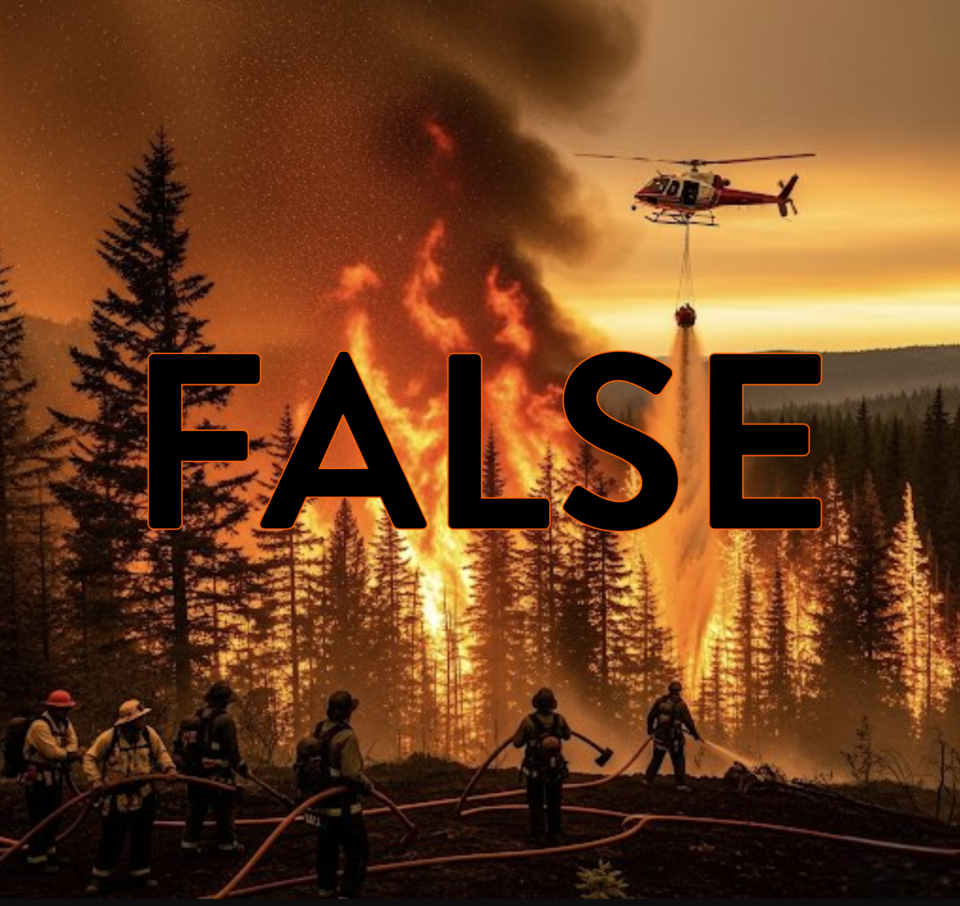
Another user who goes by the name Joemar Sombero has posted more than a dozen AI-generated images claiming to show wildfire activity in B.C.
The images often show sweeping scenes with multiple firefighting aircraft and lightning strikes in the background. Others are slightly less dramatic and harder to spot as fabricated.
BIV identified several more AI-generated images posted to social-media platforms purporting to show wildfires elsewhere in Canada.
Heidi Tworek, Canada research chair in communications and professor at the University of British Columbia, said image manipulation has been around for as long as images have existed. But with the latest advances in technology, nearly anyone can pump out false and increasingly convincing pictures.
“This is now a staple feature of any kind of climate emergency,” said Tworek.
AI images 'supercharging' misinformation during wildfires
The proliferation of AI-generated wildfire images has exploded in recent years.
Last year, Michael Khoo, a Canadian and policy co-chair of the Washington, D.C.-based Climate Action Against Disinformation group, co-authored the Flame Wars report, which analyzed misinformation in the midst of Canada’s 2023 wildfire season — the most destructive on record.
As residents sought information about evacuations and loved ones, false claims on everything from lasers, drones and weather control to eco-terrorism and state-driven arson surged online, according to the analysis.
The authors found a wide range of state actors and far-right aligned groups have increasingly promoted conspiracy theories around wildfires. Others appeared to have no ideological stakes but were seen sharing false information to drive engagement, and ultimately, profit off disaster, said Khoo.
In the years since, Khoo said AI-image generation has further spurred a new scale of online misinformation because the images are more believable and less transparent than before.
“It’s just open season,” said Khoo.
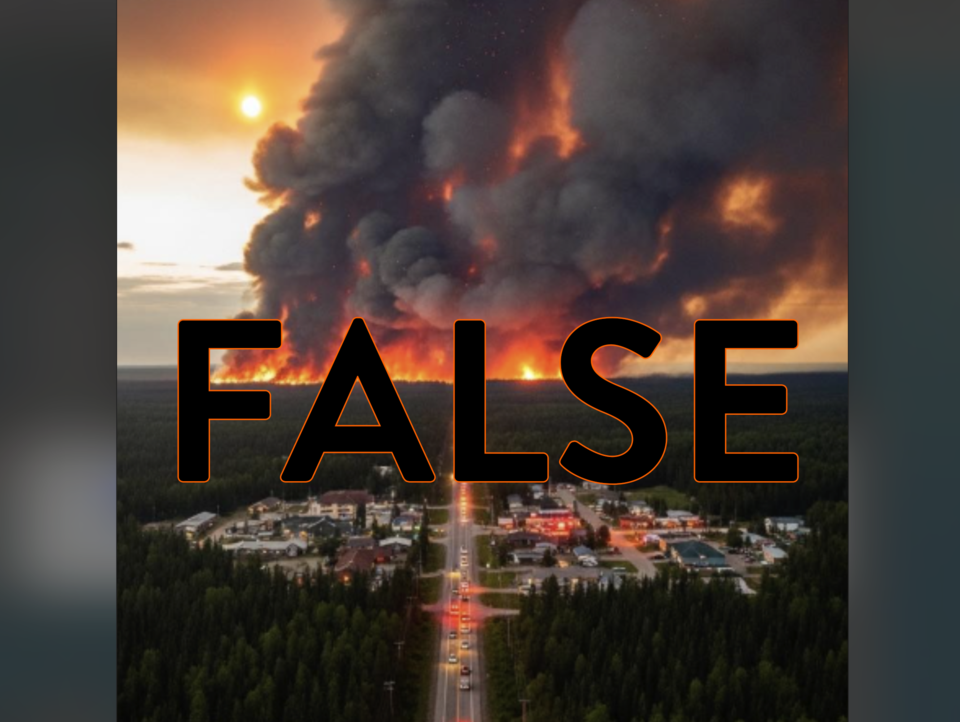
When wildfires decimated parts of Los Angeles in January 2025, a slew of images produced using AI apps circulated on multiple social media platforms. In one, the city’s downtown is engulfed in flames.
Agence France Presse’s fact-check team analyzed the images, finding the flaming buildings showed the Crypto.com Arena (formally the Staples Center) — the same facility where the last three Grammy Awards have been held. That part of the city was never affected by the Palisades and Eaton fires.
Chris Russill, who also co-authored the Flame Wars report as the academic director of Carleton University’s Re.Climate centre, said his group has just begun monitoring the impact artificial intelligence is having on climate disinformation.
“It’s supercharging a challenging problem, but one that’s been anticipated for a while,” said Russill. “And yet these platforms have still stripped out fact-checking systems.”
Meta waters down fact-checking
Earlier this year, Meta announced it would end its fact-checking program in the U.S., replacing it with a “community notes” system similar to what’s on X, the social-media platform formerly known as Twitter.
While Meta said the move would not initially apply to Canada, the company would be easing restrictions on incendiary topics around the world.
The move followed an agreement between the B.C. government and Meta, Snap, TikTok and X, who in April 2024 said they would form a BC Online Safety Action Table.
The table brings together experts, parents, tech companies and government to discuss how to keep young people safe from online harms.
At the time, the province said it appreciated that Meta had also committed to working with B.C.’s emergency management officials to “help amplify official information for people in emergency situations like wildfires.”
Meta Canada spokesperson Julia Perreira said in an email that the company deploys a crisis response page when disasters like wildfires threaten population centres.
The page acts as a “centralized hub” highlighting authoritative information from official sources and community members, she said.
“In times of crisis, we remain focused on making sure Canadians can access authoritative information and connect to their loved ones. Official information from government agencies and emergency services [is] available on our platforms,” a statement from the company says.
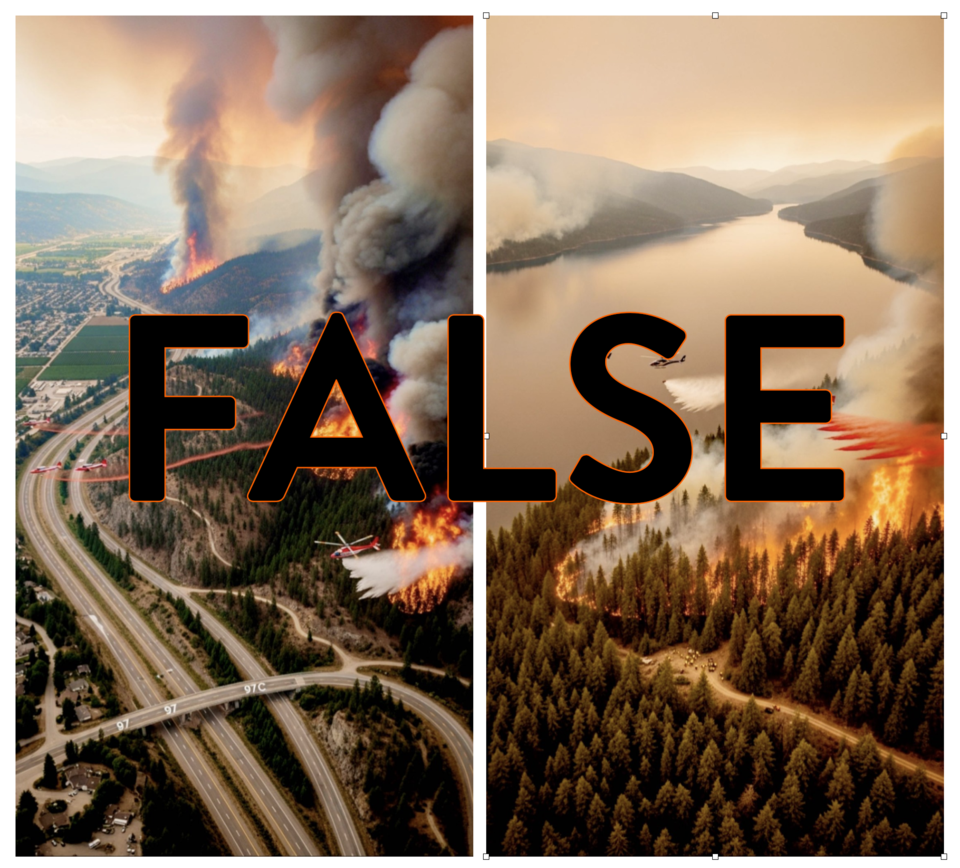
Meta did not respond to questions on whether it was doing anything to combat the spread of misleading information through AI-generated images.
Strong said the B.C. Wildfire Service does not directly engage with social-media platforms. In the last couple of years, she said, BCWS has intentionally shifted away from sharing operational updates on social-media platforms — partly due to a lack of engagement and partly because social-media algorithms often lead users to see posts long after an emergency has passed.
AI-generated images seem to be the latest iteration of that misinformation, she added.
“What’s interesting here is that despite the AI component, it’s still very much a platform social-media issue,” said Russill. “They’re still inviting and amplifying engagement with striking images that they seem unable or unwilling to label as AI-generated or fake.”
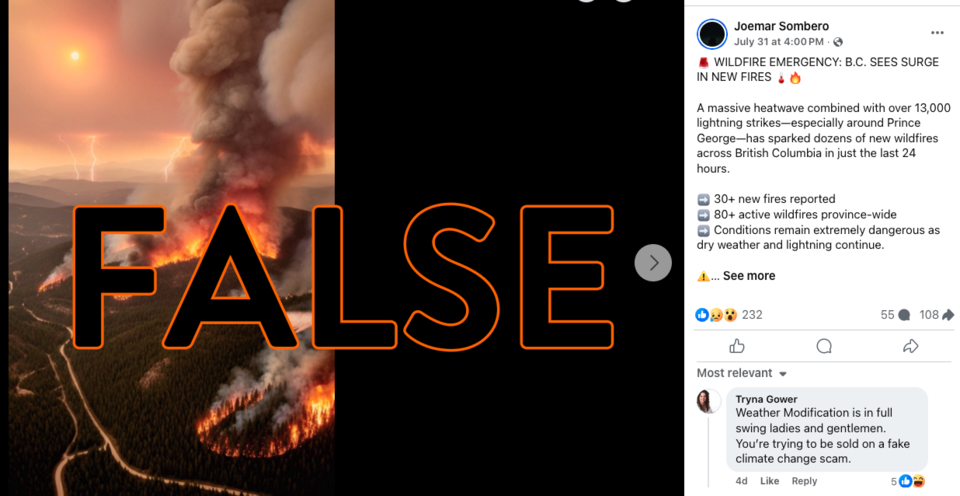
Meta news ban goes largely unnoticed by Canadians
The online spread of misleading information about wildfires also comes as some social-media platforms have pulled back from fact-based reporting.
On Aug. 9, 2023, news disappeared from Meta’s Facebook and Instagram platforms after the company refused to abide by Canada’s Online News Act — a law meant to oblige large tech companies to enter into licensing agreements with news publishers.
A year into the ban, research from McGill University’s Media Ecosystem Observatory found that while misinformation deepened on Meta’s platforms in Canada, three-quarters of users didn’t notice that reported news stories had disappeared.
“Canadians continue to learn about politics and current events through Facebook and Instagram, but through a more biased and less factual lens than before, and many Canadians do not even realize the shift has occurred,” the observatory noted in a summary brief of its findings. “They do not appear to be seeking news elsewhere.”
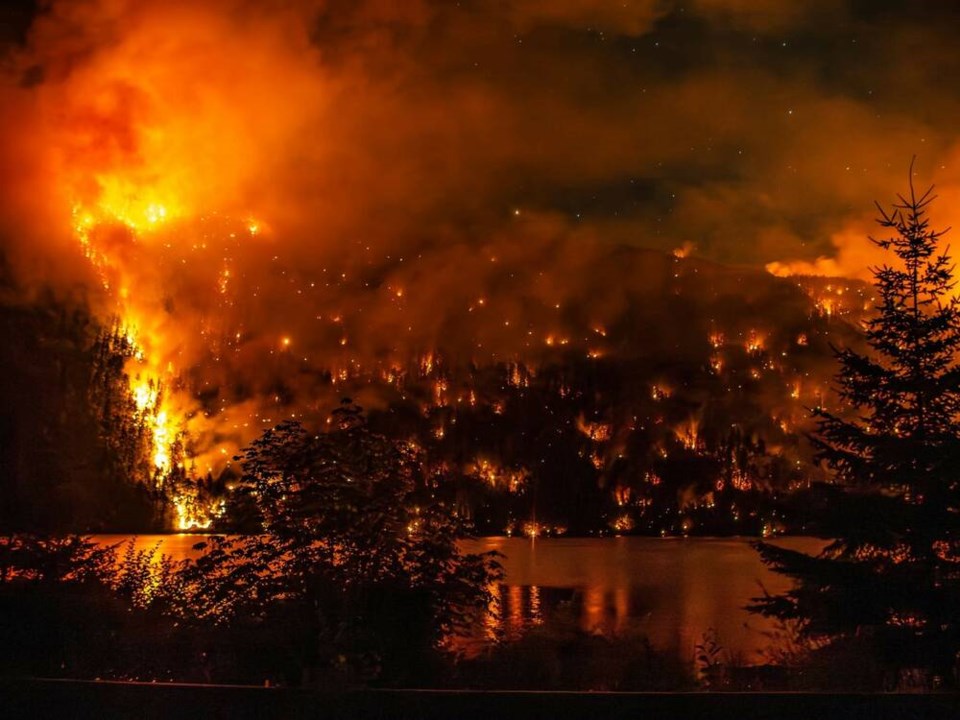
Together with the elimination of reported news on Meta, the rise of AI images could disrupt people’s decision to evacuate in an emergency, said Russill.
Over the long run, he said, it would likely further erode trust in official information channels to the point where they don’t listen to anyone.
“You see the difficulty navigating these situations is partly an effective the erosion of local journalism,” Russill said.
Misinformation risks real-life violence in fire zones
Back in Metchosin, Witt said he tried to delete the AI-generated images he mistakenly posted, but several copies are still floating around the social-media platform.
The experience has frustrated him. Beyond his crews contracted by the B.C. Wildfire Service, Witt has family in the heart of the Wesley Ridge wildfire.
He says sharing misleading AI-generated images of wildfires is as bad as flying drones into fire zones to capture sensational footage.
Some people’s appetite for questioning vetted information has also led to direct conflict with emergency authorities.
Over the past five years, the BCWS confirmed online misinformation has prompted some people to avoid evacuations or to interfere with firefighter operations on the ground, sometimes forcing them to halt work or return later when it was safe.
Witt says his teams have experienced the violence firsthand.
In 2023, one of his crew members was struck by a frustrated resident as fires engulfed B.C.’s Shuswap region. In the end, Witt said police had to come from as far away as Vancouver to protect firefighting crews.
“When you stumble into something like that, the truth is important,” he said. “But we live in a post-truth world.
“It’s disturbing.”

